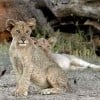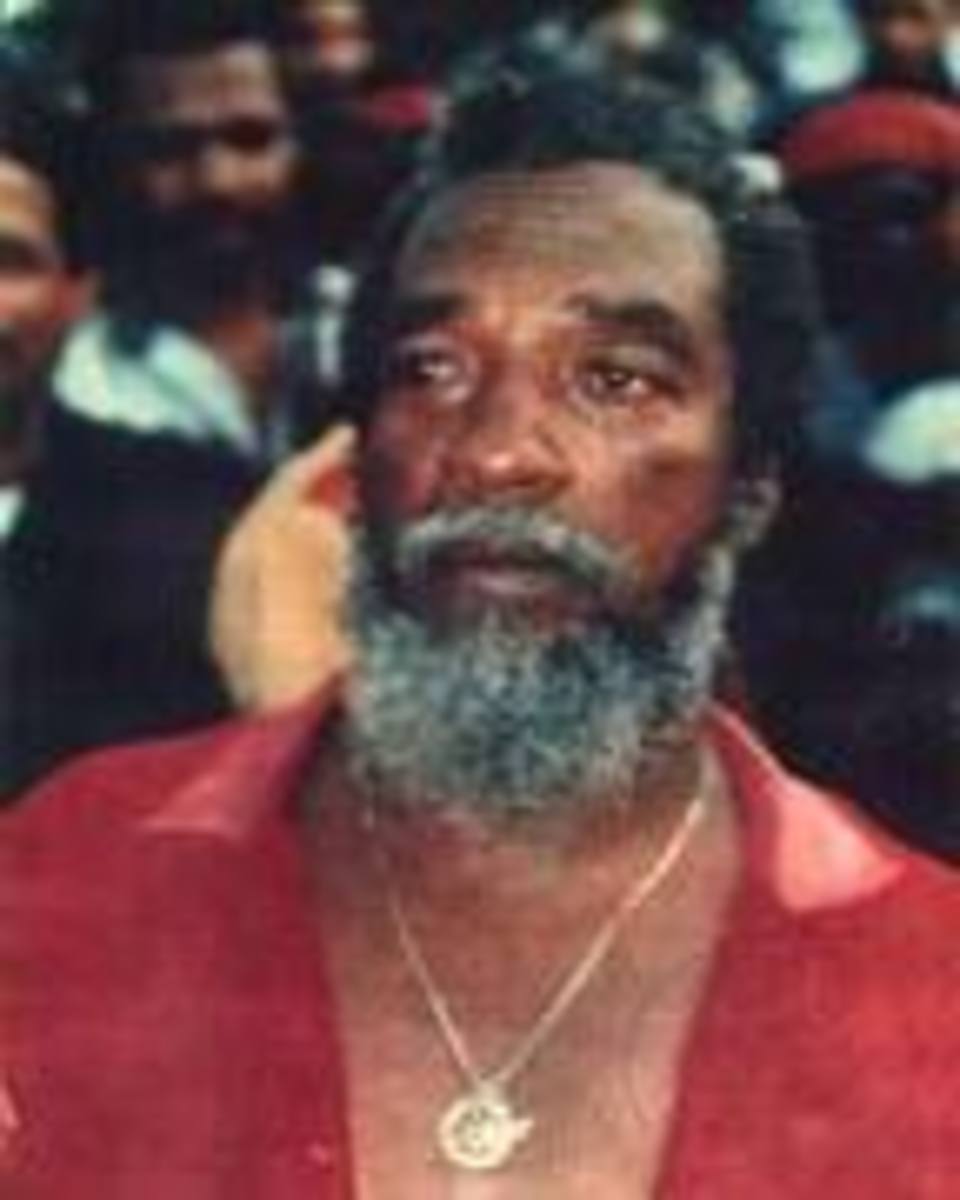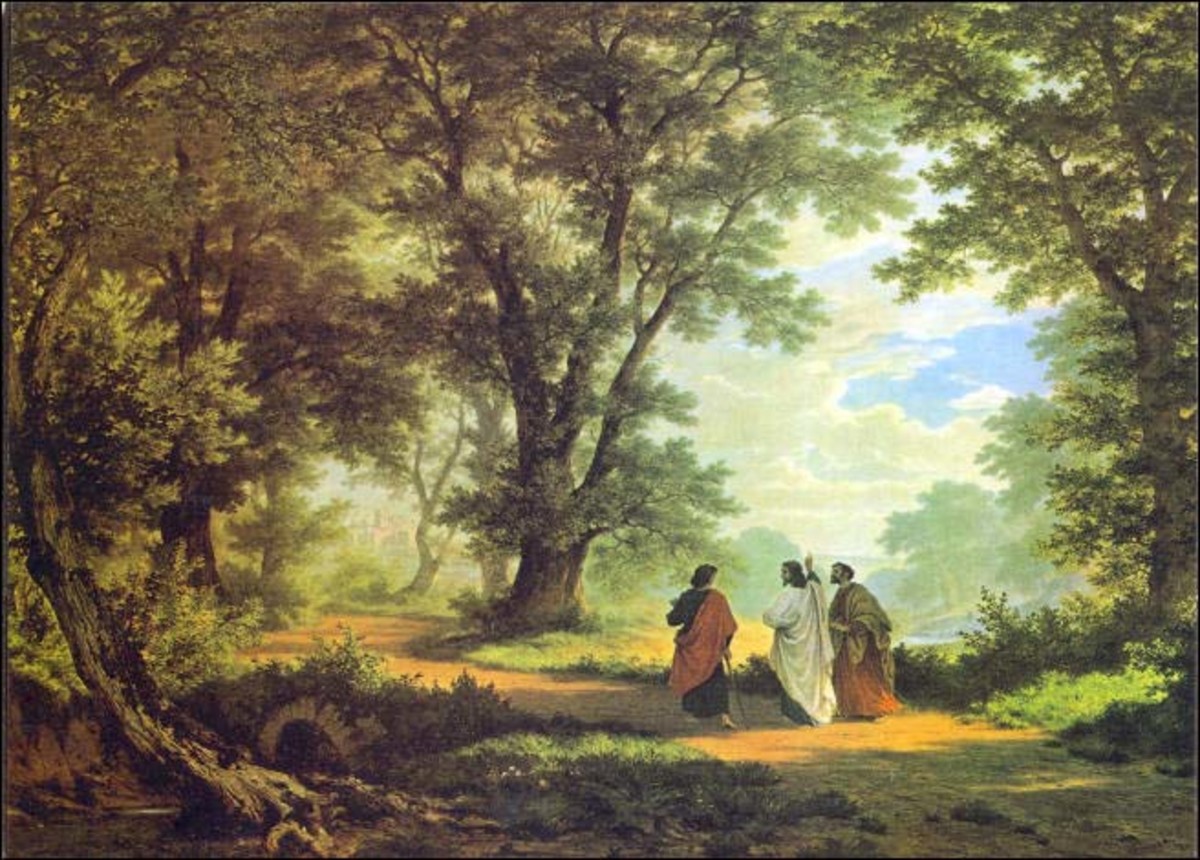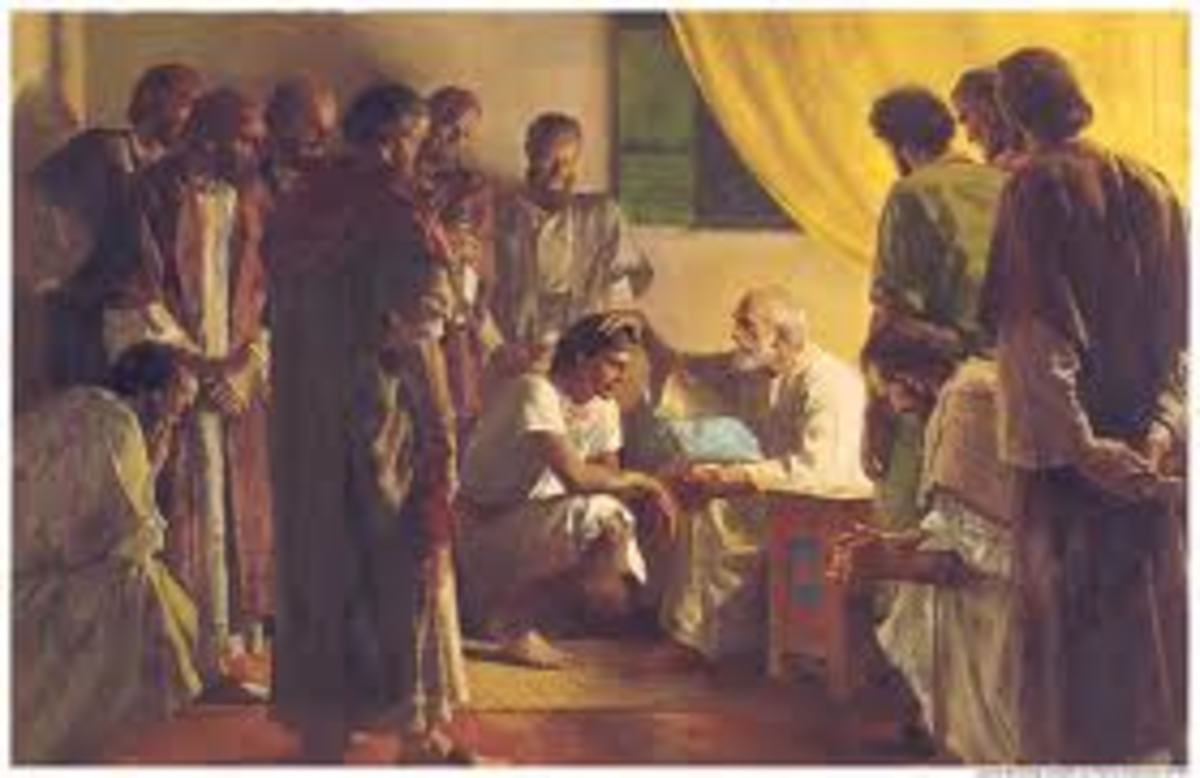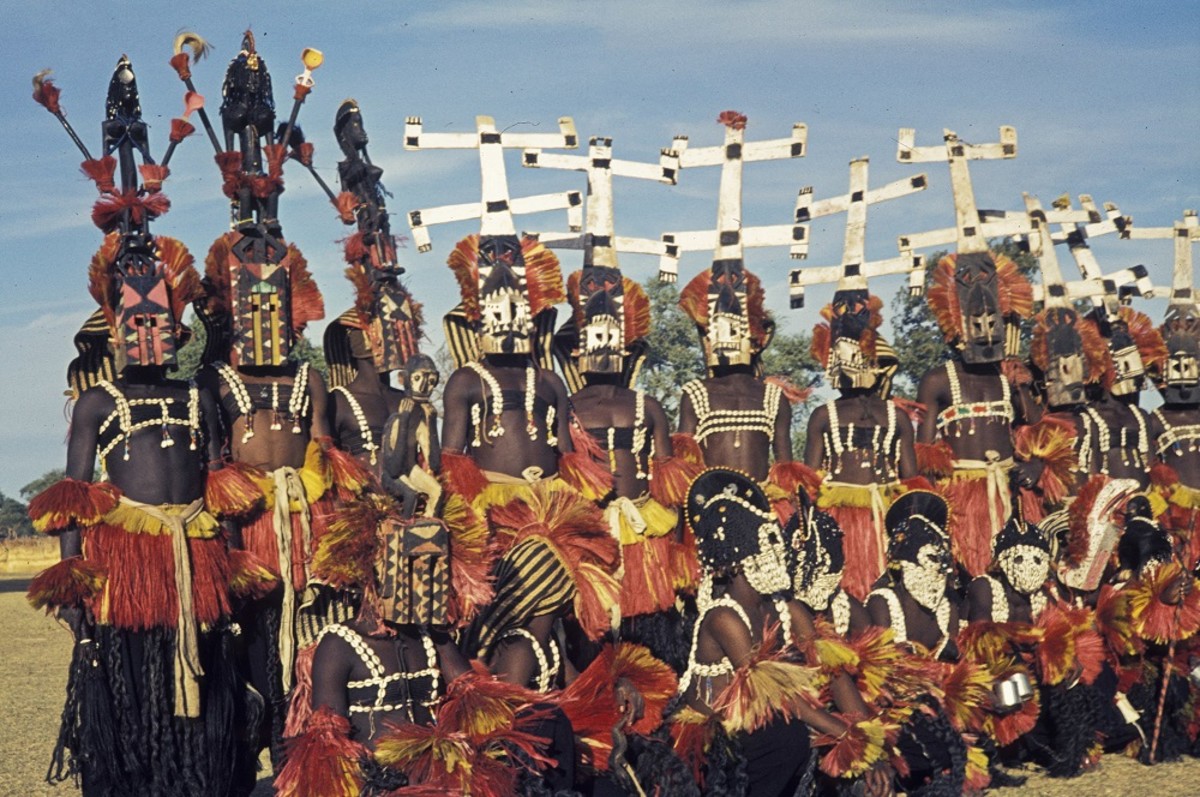The Lost Ten Tribes of Israel Have Been Found - Part 5
The Tribes of Asher, Napthali and Dan Have Been Found and Exist Today.
Today we will continue with our research for more of the Ten Lost Tribes of Israel. We now know where these last three Tribes are today. Asher, Napthali, and the Tribe of Dan are very much alive and living among some of the most blessed Tribes like the British Common Wealth Countries of Great Britain, Australia, Canada, New Zealand, also in France, the Scandinavian countries and the United States of America.
Who these Tribes are today will astound you because they are living besides us in Christian nations. Though they live in a paganized Christianity it doesn't make them anyless part of the Lost Ten Tribes of Israel. We shall see that the Gospel of Jesus has reached these people today after the ascension of our Lord Jesus Christ, Matthew 28:18-20, Acts 1:6-8. This is beng done according to E. Raymond Capt, Yair Davidiy and the British Israel World Federation witnessing to us now. Now, let's see where these last three Tribes are today.
1. Asher - Asher was Jacob's 8th son from Leah's handmaid Zilpah. His name means "happy". He had four sons: Jimnah, Ishuah, Isui, and Beriah and one daughter Serah. Jacob's blessing on Asher is in Genesis 49:20 - "Out of Asher his bread shall be fat, and he shall yield royal dainities. Moses said of Asher in Dueteronomy 33:24-25: and of Asher he said, Let Asher be blessed with children; let him be acceptable to his brethren, and let him dip his foot in oil. Thy shoes shall be iron and brass; as the days, so shall thy strength be.' The traditional symbol for Asher is an Olive Tree.
Asher's descendents can be found in Northern England and Scotland where they are intermingled with with Joseph's children of Ephraim in Britain. They are aso found in Scandinavian countries with several of the other Lost Ten Tribes of Israel. They are related to the Vandals who had come from the Sea of Azov north of the Black Sea by the River Don. They were known in the first century CE as the Lygians or Lugii. They were located in the Upper Vistula River area. These Lygian - Vandals were the Boreoi, the Omani and the Hessi peoples. These names are similar to the sons of Asher, Jimnah, Ishuah, Isui and Beriah. Many other factors equate Asher with the Vandals. They can be identified also with the the legendary Vanes, who dwelt in Vanaland besides the River Don in southern Scythia who moved later to Scandinavia.
The Vanes joined with Aseir (Asher). The Aseir like the Vanes became ancestors to parts of Scandinavia. The "as" in Phoenician Hebrew is a shortened form of Asher and the Phoenician language seems to have been the spoken dialect of the Northern Ten Tribes of Israel before their exile. Aseir were known to be equated by scholars with Ansis who became the ruling elite among the Goths. The Royal family of the Ostrogoths were known as the Amal. Amal son of Helem is found among the early forefathers of Asher. Both Goths and Vandals spoke the same language, but are different branches of the Northern Tribes of Israel.
The Vandals first appeared south of the Burgundians, who in turn were south of the Goths on the Baltic Sea coast. Thse Vandals were led by two leaders Ambri and Assi. They had once encountered Alexander the Great and moved to Northern Europe and joined the Cimbri and Tuetons in attacking Rome. They were descendants of Jimna the son of Asher. The Assi of the Vandals were known in Roman Chronicles as having conquered the Goths in East Scythia. After that they moved to the Don River region before moving northward. They were known as Asir or As and moved to Scandinavia.
The Vandals were a Federation made up of the Vandili, Varini, Goths and Burgundinians. The Burgundians settled in France and Switzerland. The Burgundinians are descendants from Beriah son of Asher, who's name can also be pronounced as the Beria(g)h or Veriag. These names are similar to Barragos, Varegu and Variag which names were applied to the Vikings who appeared in Russia. A related people to them are the Varachan Huns who were related to the Kazars in southern Russia. The Varins or Warings came with the Angles and Saxons to Britain and conquered the Celtic Brigantes . The Brigantes were also descendants from Beriah the son of Asher. They were located in the northern area of Roman Britain or Northern England and in Gaul (France) and in the east Switzerland and southeastern Ireland.
The Vandals also became Africans when they moved from Vistula a region of south Poland and for a time became subject to the Romans in Hungary. In 400 CE they participated in the invasion of Roman Gaul and then Spain. They then moved to North Africa under the leadership of Geiseric. From there they invaded Italy and sacked Rome in 445 C.E.. A tradition says that in their raid on Rome the Vandals liberated treasures taken from the Temple in Jerusalem that the Romans had taken from Jerusalem in 70 A.D.. There is a possibility that some of the treasures from the Temple in Jerusalem went to Ireland with the Vandals and then to Britain.
Yair Davidiy the Jewish researcher has lots of details about these peoples that it would be worth your while to get your own copy of "The Tribes", to give yourselves more time for your own investigation along with his other books about Lost Israel. I can only touch on some of his works which should be quite interesting to students of the Bible.So bear with me Asher and his Israelite brother Gad, had the same mother, Zilpah. The Scots claim to have descended from the Scyths and the Goths were regarded as a Scythian peoples. These Scythians forbade the raising of pigs. The Scots had a similar prohibition that had pre-existed from pre-Christian times. So there must have been a Jewish Influence on them from their past history. The Scots were once noted for their philosophizing like many Talmudic Jews. Their must have been a Jewish element among them also. The Vandals of Asher were to become an important group among the "Angles" in Northern England. A similar phenomena has been noticed among other peoples of the Lost ten Tribes of Israel who came to Britain.
So, the descendants of Asher have been located and they are the Vandal nation. The Lygian Vandal Tribes correspond to the sons of Asher. The Vandals have been represented in mythology as the Vanes people of Vanaland. They have been found to be from the area of the Don River besides the Aseir or Tribe of Asher. They migrated to Scandinavia were the Vandals were Located as the Vendyssel. Yimnah, the son of Asher are found among in the Ambri who came from Bactria and moved to northwest where they were known as the Ambrones and partners with the Tueton and the Cimbri. Beriah son of Asher was found among the Burgundians and in the Brigantes and the Varangian - Vikings in Berigio of Scandinavia, and in the Varachan - Huns amongest the Kazars.
Many Vandals entered Britain from Ireland as the 160,000 Africans in the invasion of Britain by the Angles and Saxon. The Angli who conquered Norththumberland were partnered with the Vaeini, who were a Vandal group as were the Rugini who also participated with the Anglo-Saxon forces. The Varini were associated with Sidon, Sidini or Sudini whose name is derived from the Phoenician city of Sidon,which in Biblical times was encompassed by Asher, Heber or Chebar the son of Beriah the son of Asher who was represented by Cabar who according to tradition settled in Celtic Wales. Heber was found in the Lugi-Ligi of Vandal origin and also amongst the Chabiones who invaded Gaul with the Eruli. The Eruli belonged to the Tribe of Gad and was classified as a Vandal sub-tribe. On the whole Asher dominated northern England and Lowland Scotland. A presence of Asher is found in Scandinavia and northern Europe. some of these Israelites that remained in Europe and Poland later migrated to America as descendants of Asher.
2.Napthali
Now, Napthali was Jacob's sixth son through Rachel's handmaid Bilhah.His name means to wrestle or joining in Hebrew. This is because Rachel wrestled with her sister Leah over who would be Jacob' favorite wife. Napthali had four sons: Jahzeel, Guni, Jeser, and Shilem. Napthali's symbol was a deer. He was closely linked to his brother Dan because they had the same mother Bihah Rachel's handmaid. Jacob's blessing on Napthali says he is an hind let loose; and he gives godly words. This is why some of Napthali's children were philosophers and gave good advice at times and they moved around a lot like a female deer into different places.
The deer stag was a common symbol in Scandinavia and Napthali is connected with the pagan god Odin who was their mythical leader in the Land of the Thuls or Norway as and old Icelandic legend as a god of wisdom. They were found to be living in Scythia with many of the other Lost Ten Tribes of Israel. They lived in the region of Media with the Cadussi who termed themselves as Gaeli. They were related to the Sacae Scythians in the Ural Mountains, were they were referred to as the Napthalites. They were ancestors of the Anglo - Saxons who invaded Britain.. They were also known as the "White Huns".
The Chinese described the Napthali as the "little white Guti ' of Gothic stock. They were also known as the Thyssagerae by Herodius who lived in northern Scythia and in the Ural mountain region of present day northeast Russia. The cardiographer Ortellius recorded them as traditionally being with the Tribe of Dan. The Napthali were also known as the "White Huns". because their skin was lighter than the darker Huns. Other groups from Napthali can be placed in the Sigins east of the Caspian Sea who used chariots drawn by shaggy horses. Herodotus says the dress of the Sigin's was like that of the Medes and that they claimed to have been colonist of Medes. These exiled Israelites had been resettled there by the Assyrians in the cities of the Medes.
The Napthalites moved to Norway. Chinese records say that the people of Napthali settled in China for awhile and were part of the "Great Goths or Massagetae. They were described as having blue eyes and fair hair and that some of them moved further eastward to the Great Wall of China, were they were subject to the Huns or Juan-Juan for awhile. They rebelled and moved west. The bulk of them were Napthalites and became the Vikings of Norway. They have been recorded as being with the Danes or the Tribe of Dan here also.
Yes,the Israelite Tribe of Napthali has been found. They became the Napthali "White Huns" or Napthalites who with the Tribe of Dan or Dani were once located in East Scythia. From there they migrated to to Norway, This can be proven by archaeological finds and by tracing their names through Norwegian tradition. They have received blessings as Israelites and according to reports that Norway was considered to have the best standard of living in the world. Their prosperity is based on farming, fishing, and petroleum resources. Yair Davidiy's rearch is very extensive on Napthali so be sure to continue to research his books and web site for more information about the Tribe of Napthali along with The British Israel World Federation's and E. Raymond Capt..
3. The Tribe of Dan has been found.
The Tribe of Dan is not the least of the Tribes of Israel. It was a leader among Asher and Napthali when they marched together in their course at the rear of the Israelites in the Days of Moses. Their symbols are the eagle, the snake, the lion, weighting scales and a dragon. Dan was the fifth son of Jacob through Rachel's handmaid Bilhah. His name means to "judge". Dan had one son named Hushim (Genesis 46:23). He was also known as Shuhami ( Numbers 26:43). This Tribe was the most populous when it came out of Egypt with 62,700 males betyween the ages of 20-60.
Aholiab of theTribe of Dan assisted Betzaleel of the Tribe of Judah in building the Tabernacle in the Wilderness, Exodus 31:2-6. Both Dan and Judah are "Lions whelps", that are used to working together for God. A good example is Samson who's father was a Danite but his mother was from Judah.as Yair Davidiy points out in his book "the Tribes",on page 237. Redemption will show participation of several sections of Israel working together. Early Ireland was home to both Dan and Judah. Ireland is named after Ir or Yair a son of Judah. There is a tradition that the Jutes and the Danes are descendants from Judah and Dan.
Jacob's blessing on Dan says, "Dan shall judge his people as a Tribe of Israel. Dan was a Tribe of Israel and a serpent by the way, and adder in the path that bites the horses heels so that the rider falls backward ( a kind of hit and run tactic in overcoming their enemies). Jacob also said that Dan shall wait for his salvation, Genesis 49:16-17. Could this have to do with the missing Tribe in Revelation 7? Here is food for thought for those that are studying God's Word closely. Moses said of Dan that he would leap from Bashan. Much of Dan did escape the Assyrian captivity and migrated north and west into Europe and the British Isles. We shall see soon just who is Dan today that might escape the coming time of Jacob's trouble, Jeremiah 30:7-9.
Mopsus was a hero in Dan . Usually this name refers to Samson. However, the Danites did take a grandson of Moses with them in Northern Israel. He was a Levite priest to them (Judges 17:7-12). His name was Jonathan, also see Yair Davidiy's book "The Tribes" on pages 235-236. The book of judges relates to this episode in the history of Dan and shows how 600 men from Dan moved north to a place called Laish, who's inhabitants were Sidonian - Phoeniceans. They wiped out this city and named it after their father Dan.There may have been another city in the book of Joshua that relates how the Tribe of Dan conquered Leshem and also named this city after their father Dan, Joshua 19:17. This city of Leshem was in northern Galilee and was also known as Daphne. The city of Laish on the other hand was a city known as Luash of Dananu. This city belonged to Smal of Cilicia in southern Turkey today. It was known as the kingdom of Smal of Dananu and of Yadi and Laish of Hamath. This was in an area called Arabia Deserta and Syria. To the east and southeast of this area were the territories of Bathanael in the kingdom of Bathanaea. Bathan is an Aramaic prounounciation of Bashan.
Remember Moses said of Dan that he shall leap from Bashan to the north. Yadi was settled by the Iari of Judah and these were united with Dan. The Danites had a habit of conquering cities and naming them after their father Dan. Dan left a trail of all the places were they had been like a snake does when it sheds its skin. The Dananu of Cilicia were also identified with the people of Mopsus of Anatolia. Mopsus was also known as Moxus and is a variation of the name Moses. The northern people of Dan can be identified with Damnanu, Danau, Denye, Denyen, Danya. They were also recognized with the people of classical Greek writings.
The early Danites were in Greece with the Pelsgians who were believed to be the Philistines. The struggle between the Danites and the Philistines in Israel seems to be related here in Greece. The Danites formed a military class among the Greek Myceneans. These people are believed to be the Hyksos with the Danaioi of Greek tradition. The Dananu of Cilicia were connected to Greek Mythology with a hero named Mopsus. He was linked with Daphne and Apollo. The legendary Daphne was supposed to be the mother of Mopsus and she had a colony of Colophon in Iona. Iona was in western Anatoloa or Turkey opposite Greece. Mopsus seems to relate to Samson here.
The movement of the Danites from north to south may have taken place during the time of Samson. The Tribe of Dan can be likened to a band of wandering warriors moving along the coast of Syria, Phoenicea, ans Cilicia, which can be viewed a different parts of the Land of Israel. The mother of Mopsus (Samson)was Daphne and according to Jewish history, Josephus says her name was given to a spot at the head of the Jordan River which was a center of the Tribe of Dan in Galilee. Greece was captured from the Myceneans by the Doreans who claimed to be a remnant of the Danaioi or Tribe of Dan. Heraclidae were supposed to have led the Dorians invasion of Greece and believed they were descendants of Hercules (Dan). The name for the Jordan River was taken from the Tribe of Dan.
The Dananu were first centered in Smal to the east of Cilicia. The Dananu moved to Adana in the 700's B.C.. After the destruction of the Hittite Empire in Northern Syria some of the Tribe of Dan can be found at Karatepe were a bi-lingual language used along with a form of Phoenicean- Hebrew. The king of Karatepe identifies himself with the Dananu (Dan) and says he was descended from the House of MPS. This means Mopsos is related to Samson of the Tribe of Dan. "Mopsos" was a title given to the idol Sandon, who was equated with Hercules and was in Cilicea. The name Sandon is a dialectic version of Samson. The Greeks said Hercules was the great grandson of Perseus who was a descendant of Dananu of Greek Mythology. Many of his feats are similar to the feats of Samson.
Dan went into early exile as noted in Judges chapter 17 to avoid fighting with Judah.. The Danites in their journey north took a young Levite named Yehonathan and their idol with them to Laish. After they sacked Laish they renamed it Dan after their Father, which I already mentioned from Judges 18:39-=40. In the Hebrew text it indicates that Yehonathan was of theTribe of Manesseh but was really of the Tribe of Levi and a descendant of Moses. This is the place in the Bible where the letters of the name of Manesseh are arranged differently. The Hebrew Text has the letter "N" in the name of MaNesseh in an ELEVATED position ( Judges 18:40). This was put this way because they wanted us to know that Yehonathan was a Levite related to Moses. The Danites revered Moses as their founder of their nation of Israel. Scripture shows that some that some of the Tribe of Dan left the Land of Israel early, Judges 18:31. This Follows the early exile of Dan in 1000 BCE rather tham 721 BCE.
The Danites were into metalurgy. Ahioiab and Hiram (2 Chronicles 2:3) shows that they were artisans and metal workers and came from the Tribe of Dan. The Sea people of the Tribe of Dan were also sophisticated copper and smelter workers. Dan in Galilee was destroyed in 800 B.C. by the Aramean kingdom from the north. Part of the inscription in Aramaic was found on the site of Dan in Galileee. Dan in Galilee was known to have been attacked by the Syrian king Hadad in 815 B.C..
In Scandinavia during the Bronze age there existed a highly developed society rich in metalurgical metal and gold products of a very high standard. This civilzation came to an early end between 500 BCE and 400 BCE due to a climate change and foreign invasions. This cultures population quickly changed and was repopulated by Israelites from Scyrhia. Irish legend speaks of the Tribe of Dan as metallurgists and scientifically adept. They arrived in the Northern Isles as far as Ireland is concerned from Scandinavia. The Tribe of Dan originated say Irish sources from Mt. Lebanon. It sojourned into Greece and then fled north and came to Ireland. Welsh legend also speaks of the children of the Tribe of Dan.
Dan came north and west in two separate waves before and shortly after the exile of the other Tribes of Israel by the Assyrians. They entered Scandinavia and from there moved to the British Isles after they had settled in Gaul (France). These Danites were associated with the "Megalithic" culture of the Atlantic West, which was absorbed by the Celtic culture and civilization. Much later another group of these Danites came from Scythia and Scandinavia and settled in the British Isles.
Dan has always been associated with the Tribes of Gad and Napthali among Gothic forces.. Dan was also associated with the Celts in Wales, Ireland, Scotland and Northern England. From ancient times Dan was divided into several groups or sections. We have one group in Northern Galilee near their neighbor Gad, Joshua 19:42. Thet were also called the Dingling and were linked with the Dangalai, which means Dan of Galilee. They had been neighbors to their cousins the Goths, or Gad of Gadeosia in Ancient Eastern Iran.
The Damnae of Scythian Serica are similar to the Damnoni of Scotland who lived besides the Dan River in Scotland and the British Damnones of Dannonia in Northern England. They were called the children of Dan in Welsh legend as theTribe of Dan who came to the British Isles from the Land of Israel from Greece and Scandinavia. There was an area in southern Britain that was called alternately Dannonia and Defenia. Defenia is similar to Daphne which was a former place of Dan in Northern Israel and associated in the Hebrew Talmud with the Tribe of Dan. They are liked to that wandering group of Danite warriors in Judges 17&18.
Dan amongst the Vikings. The Danes from Dan were recorded with Napthali in Scythia. The Danes moved to Sweden and Conquered Denmark. The Danes (Dan) and the Norwegians (Napthali) formed the Vikings, who invaded England. The Danites settled in northeast England and the Norwegians in the northwest..They also conquered and settled in the east and parts of Scotland.
The symbols of Dan are still used today. The Danes from Dan invaded Denmark at about the same time Napthali moved to Norway. TheTribe of Dan is represented by a snake, a lion, an eagle, weighing scales and a dragon. Many peoples of Dan settled in Denmark,Ireland, Scotland,Wales, England, and the United States of America where from 40 to 50 millon people of Irish descend live today.
So, Dan through his son Hushim (Genesis 46:23) or Shuham (Numbers 26:42) has many descendants scattered amongst the Lost Ten Tribes of Israel today. Hesse in northern Germany represents Hushim. Shuham can be found in the Suehani who are in Sweden with the Danes. It is very noticeable that very often the Tribe of Dan and Napthali were interwoven and both were in the Scythian group of Napthali. We must remember that another section of Napthali was known as the Ye-da or Ye-ta. These names are similar variations of the Tribe of Judah found in Northern Mesopotamia. The Assyrians called the Tribe of Judah Ya-di or later Ye-ta.
Dan was with Napthali and colonized Denmark and his symbols are still found in Ireland, a snake,, in Wales a Dragon,, in Denmark and England a lion, and in the U.S. an eagle and weighting scales. A cerain symbolism existed between Dan and Judah. One tradition is that the Jutes (Judah) and the Danes (Dan) are descendants from Judah and Dan of Israelite origin and are related to the Anglo-Saxons or Tribes of Ephraim and Manesseh.
If you would like to have more information about the Tribes of Asher, Napthalian and Dan be sure to check our links to Yair Davidiy's or E. Raymond Capt's the Artisans. or the British - Israel World Federation. They can give you a deeper understanding of all these events of where all the Ten Lost Tribes of Israel are today. This ends our series on the search for the missing Tribes of Israel. So be sure to continue to study these facts and get a better understanding of what Tribe you may belong too, 2 Timothy 2:15 & 3:16-17.Amen.
The Tribes
- Brit-Am | Lost Ten Tribes in the West
The Ten Lost Tribes are now amongst Western Peoples. Proven from the Bible, Talmud, Rabbinical Sources, Ancient History, Archaeology, Mythology, Linguistics, and related fields. The Khazars were Hebrews
The Lost Ten tribes of Israel Have Been Found
- The British-Israel-World Federation
The Tribes are only lost in Church theologies. the British- Israel World Federation knows where they are? Come and find out? Are you and Israelite? If you are you had better get ready for Jesus Christ return to save you.
The Artisan Publishers
- Artisan Publishers in Muskogee, Oklahoma Your major source for books, cassettes, and videos that unl
Your major source for books cassettes and videos that unlock the mysteries and hidden secrets of the Bible for the illumination and enjoyment of the spiritually hungry and sincere seeker of Gods wonderful Word. Publisher of E. Raymond Capts Books
The Wyatt Museum
- Wyatt Archaeological Research - Official Site of Ron Wyatt's Discoveries
These amazing archaeological artifacts revealed to us by ron Wyatt and his associates are setting the stage for this end time dramma of the return of Jesus Christ. Will you listen? Will you be ready, dead or alive?
Too long in the Sun
- Too Long in the Sun - Richard Rives - Christmas - Easter - Sunday Rest - Sabbath
Come and find ut how Satan the Devil has deceived us with pagan idols and the doctrines of men, Matthew 15:7-9. We are commanded to come out from these pagan deceptions now, Revelation 18:4-6.
Archaeology From before the Flood shows we are in the Days of Noah Now!
- Archaeology Answers About Ancient Civilizations Indus River Valley, Ancient Maps of the World, Ancie
Come see what Jonathan Gray has for us. Come see what it was in the days just before the flood in Noah's Day. Come and see more of these amazing discoveries that effect us today.
Christians For Biblical Equality
- Home | Christians for Biblical Equality (CBE)
Find out how Satan was able to divide our gender relationships and keep men and women from witnessing together for jesus Christ? Calling all women to witness for Jesus Christ now and men to support them in Christ's servant leadership examples.
The Harbinger - God's Warning to America
- Prophecy Coming True
Prophecy coming true where GODs Word reveals secrets that build absolute faith. Read Michael's 911 warning to the USA - Manasseh. Time is short so get ready for this dangerous and exciting time in our human history.
